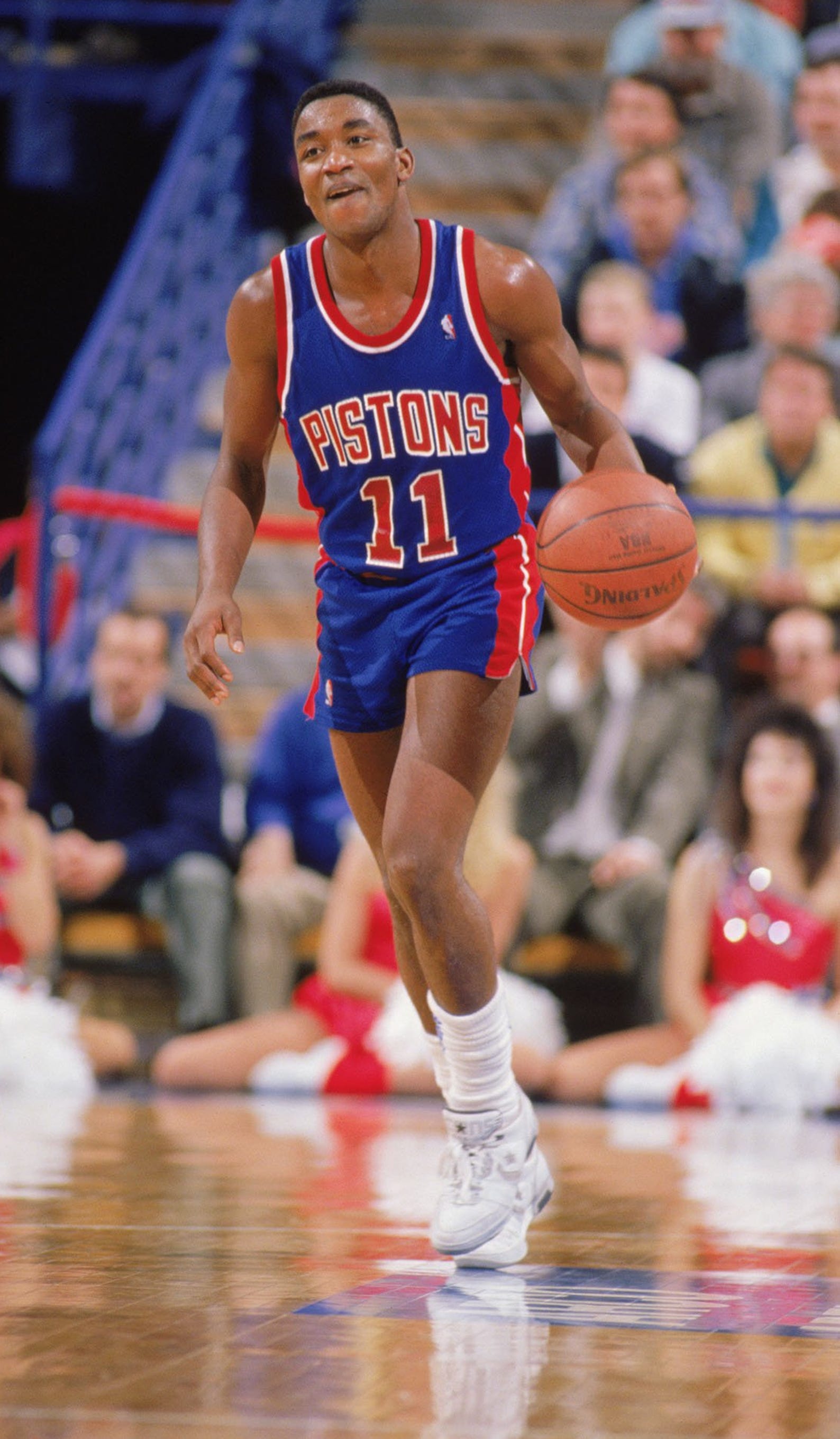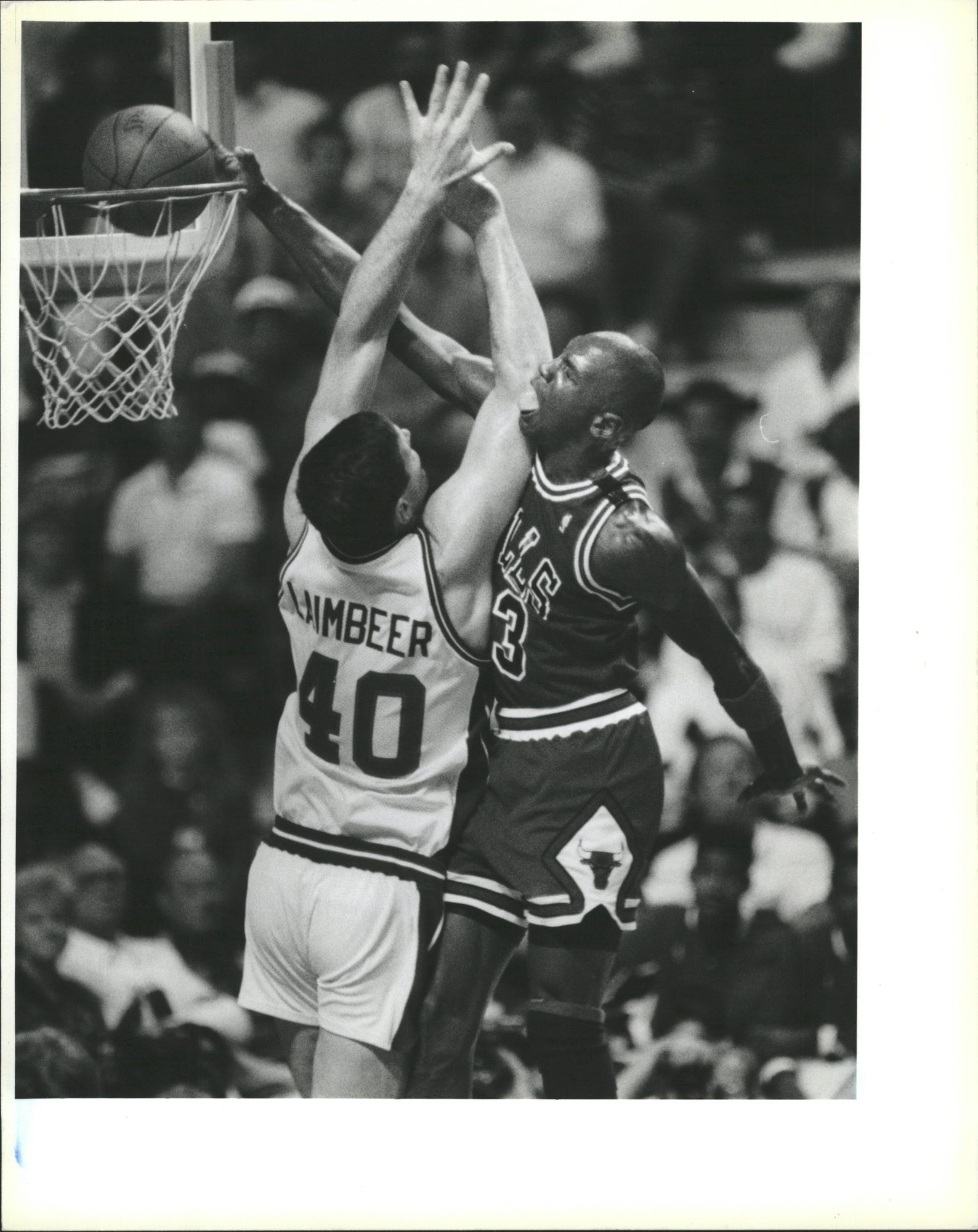Don't let 'The Last Dance' make you forget how beautiful the 'Bad Boys' Pistons could be
SHAWN WINDSOR | Detroit Free Press
They were beautiful to watch. Though I doubt you’ll see that Sunday night when ESPN's “The Last Dance” details Michael Jordan and the Chicago Bulls’ effort to overcome the Bad Boys.
Some narratives are too hard to overcome; the mythology was set long ago.
But, still, the Detroit Pistons of that era played gorgeous basketball. It’s just easy to forget after three decades of clips highlighting the shoving, fisticuffs and hard fouling, three decades of watching Magic and Bird and Jordan falling to the ground, of watching Bill Laimbeer and Rick Mahorn sneering as they did.
Yes, the Bad Boys were physical. Yes, they knocked players on their asses. Yes, they could be irritating, to opponents as well as opposing fanbases. Yes, several of the Bad Boys embraced their villainous caricatures — none more famously than when Laimbeer fouled out in Game 3 of the 1990 Finals in Portland and bowed to the booing crowd just before he got to the Pistons’ bench.
Back with the squad: Dumars makes rare appearance to honor COVID-19 workers
Yet that's the same Laimbeer who tied a then-Finals record for 3-pointers a game earlier with six. That’s right, a center who could stretch the floor ... 30 years ago.
Laimbeer was ahead of his time. So was the rest of the team, combining lock-down defense with fluid, half-court offense.
That’s how they won. They played basketball, in an often-thrilling style, not rugby in sleeveless jerseys.

Pistons' Joe Dumars dribbles around
Bulls' Michael Jordan and teammate Bill Laimbeer.
MARY SCHROEDER, DETROIT FREE PRESS
They had more in common with the space-and-movement teams of today than you might think. They were a precursor, if you will, to the late-model Spurs, or even to the Warriors — without the three-point shooting. All three relied on perimeter ball skill, off-ball movement, screening and passing to win.
Chances are we won’t see much of that movement and shot-making in “The Last Dance.” ESPN’s 10-part documentary is, after all, about Jordan and his last title run, about the cultural influence he wielded, about one of the most popular sports teams in modern history, about the weariness and tension and will behind the NBA’s most iconic dynasty.
Isiah Thomas, who was interviewed for the film, recently said he hopes his team gets a fair shake in the retelling of those years.
“We have a great deal of respect and admiration for Michael Jordan in terms of the way he played and what he’s done for our game,” Thomas told the Free Press last week. “The competition that we had on the floor was just that. We tried to win. And really, that was it. It was no hidden agendas or anything like that. It was my team against your team, and let’s see who wins.”

Pistons guard Isiah Thomas dribbles during a game against the Bulls in 1990.
DFP FILE PHOTO
Thomas’ game — and place in league history — is undergoing something of a renaissance lately. And the Bad Boys have, too.
Helped by their own ESPN documentary — entitled, simply, “Bad Boys” — which aired four years ago, the Thomas-led Pistons are less of an afterthought in the hierarchy of great teams than they were a decade ago.
The Bad Boys were famously — especially around here — a bad foul call away from a three-peat, falling to the Lakers in the 1988 NBA Finals. Even with that phantom call on Laimbeer against Kareem Abdul-Jabbar, the Pistons made three consecutive trips to the Finals and five consecutive trips to the Eastern finals.
That their success was sandwiched between the "Magic vs. Bird" and Jordan eras made it easy to overlook. And, for a while, they were almost a footnote, blamed for bullying and mucking up the game, and for walking off the court against the Bulls without shaking hands in the 1991 Eastern finals.
Detroit Pistons' coach Chuck Daly and player Isiah Thomas hold the 1990 NBA Championship trophy on June 14, 1990.
WILLIAM ARCHIE, DETROIT FREE PRESS
The Celtics, of course, pulled a similar stunt in 1989 at the Silverdome. (Though Kevin McHale met Thomas at mid-court to shake hands and wish him luck in the Finals.) Boston’s act, though, didn’t fit into the larger Celtics narrative.
They were “gritty” and “old-school” and “competitive.”
The Pistons, meanwhile, were “classless” and derided as “thugs,” a loaded word used to diminish a team that, at its best, displayed sublime and cerebral skill. So when Thomas ducked off the court after getting swept by Jordan and the Bulls, it fit the narrative.

Pistons' Joe Dumars, left, and Bill Laimbeer apply the "Jordan Rules"
defense against Bulls' Michael Jordan at the Palace of Auburn Hills.
JULIAN H. GONZALEZ, DETROIT FREE PRESS
Again, the Pistons could play like bullies, and they deserve some of that rep. But that reputation was also helped along by the way their competitors described them, often disingenuously, as bad for the game. Take, for example, what Bulls head coach, Phil Jackson, told the Chicago Tribune after the Bulls finally beat the Bad Boys in 1991:
''We believe playing our kind of basketball — solid, movement of ball, passing, being unselfish — is an enjoyable style to watch. We think that kind of game is clean and quick, and we think it`s just time to move onto another style of basketball in the NBA.”
He’d been saying that about the Bad Boys for more than a year, trying to influence the refs. Part of it was gamesmanship — just as it was when Jordan made similar comments about the Pistons’ style.

Bulls' Michael Jordan slams over Pistons' Bill Laimbeer during Game2 of the Eastern Conference finals May 23, 1989 at the Palace of Auburn Hills.
TIM SHARP, DETROIT FREE PRESS
Well, winners usually get to write history, and those comments shaped the Pistons’ legacy. Yet both Jackson and Jordan ignored how physical the Celtics, and even the "Showtime" Lakers could be. The proof is in the clips.
You know what else is in the clips?
Thomas whipping a no-look pass to a baseline cutter. Or speed-dribbling on the edge before crossing up a defender and finishing at the rim. Or hitting fadeaways on the baseline. Or throwing a bounce pass to Joe Dumars as he curled off a screen, the ball waiting for him as he arrived.
There is Dumars changing direction and changing speed and kissing runners off the highest part of the backboard. And Vinnie Johnson stopping on a dime and rising over defenders for pull-ups.
All three of them moved and passed and created angles, anticipating where the others would be, a silky symphony of skill and shot-making. It was breathtaking, and, together, they formed one of the best backcourts in the history of the game.
None of this will be the focus of “The Last Dance,” of course. That’s understandable. This film is about the most mesmerizing and compelling player — and team — in NBA history.
Just don’t forget what made those Bad Boys teams transcendent, and the beautiful basketball they played to earn their own place in history.



Commenti
Posta un commento